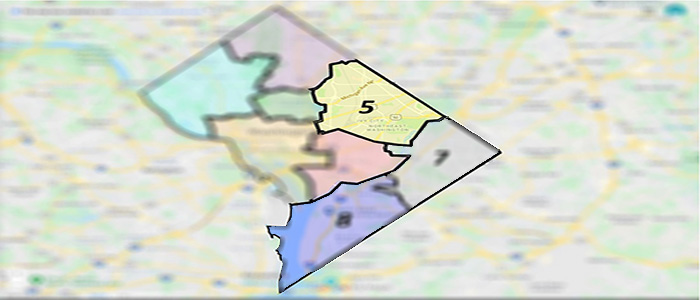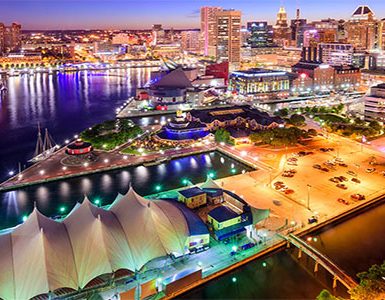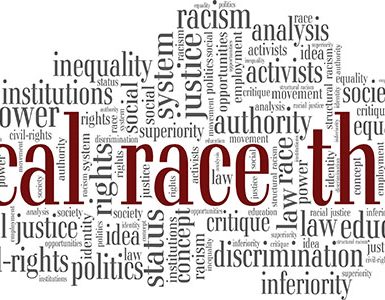Eight wards make up the District of Columbia (D.C.). Of these, wards 5, 7, and 8 are routinely considered the most underserved. Compared to their wealthier neighbors hailing from Wards 2 and 3, residents of Ward 5, 7, and 8 tend to have lower median household incomes and struggle with greater barriers to access to a wide range of services.
Advocacy groups warn of the cumulative effects of these disparities and long-term consequences for residents of Ward 5 neighborhoods. What are some examples of these consequences, and what actions are being taken to address concerns over healthcare, education, affordable housing, and additional social measures? Are inequities in these underserved communities actually improving?
We begin by taking a closer look into Ward 5, located primarily in northeastern D.C.
Demographics of Ward 5: Current and Historical Perspectives
Ward 5 is home to the District’s largest concentration of industrial land and is one of the city’s biggest districts. It was initially developed as a commuter rail community in the late 19th century.
According to the latest demographic information from DC Health Matters, Ward 5 has a population of 90,380 (out of 717,717 total D.C. residents). Of these, well over half (55.42%) are Black/African American, compared to 43.90% of Washington D.C. as a whole. 31.18% of Ward 5 residents are White/Caucasian (Ward 5’s racial demographic shifted from white to predominantly Black in the 1950s). The remaining residents, comprising less than 14% of the population, include Native Hawaiian/Pacific Islanders, Asians, and American Indians/Alaskan Natives.
At $91,189, the median household income in Ward 5 is comparable to the median income of Washington D.C. ($91,414). Ward 5 also fares slightly better in terms of families living below the poverty line (7.65% of families) and unemployment (6.82%) compared to D.C. as a whole (12.05% and 7.28%, respectively). However, there is evidence pointing to racial disparities in income in the Ward. For example, the median household income of Black and African American residents ($61,140) is roughly 40% of their white neighbors ($153,768).
Beyond racial disparities in income, we see other evidence of other challenges for Ward 5 residents:
- A 2015 report on data from the D.C. Department of Health found that Ward 5 has the highest infant mortality rate in the city, seeing 11.9 babies die out of every 1,000 live births. Of note, the same report indicated that obesity and tobacco use among pregnant women in Ward 5 was also more prevalent compared to several other wards—a nod, advocates say, to the lack of access to healthy food and education, compounded by the increased stress of being poor and/or marginalized.
- Compared to other wards, residents of Ward 5 face higher absenteeism, crime rate, substance abuse, and children living in poverty.
- With a large industrial landscape, Ward 5 lacks much of the quality public transportation and pedestrian and bike access enjoyed by other areas of the city.
- Ward 5 is also home to some of the lowest-performing schools in the city.
Finally, and according to the D.C. Policy Center, Ward 5 also has one of the city’s largest rent gaps at nearly $1,000, referring to the difference between actual and potential rent. This has lead many to worry about the impacts of gentrification and its tendency to drive out lower-income families, as investors become increasingly attracted to these neighborhoods for real estate opportunities.
These inequities trace back to some historical challenges from the District’s past. To cite one example from the 1970s, communities in the Ward were plagued by rent-raising effects of illegally obtained federal mortgage insurance by real estate speculators. This drove out long-term stable renters and replaced them with “transients and drug traffickers,” according to the 2014 Ward 5 Heritage Guide from the District of Columbia Office of Planning.
What’s Being Done? Current Trends in Ward 5
Unfortunately, inequities in healthcare, education, safety, housing, and other measures remain prevalent in Ward 5 to this day, although there is some evidence of promising change.
For example, according to the Ward 5 Education Trust, the National Assessment of Educational Progress (NAEP) has recognized D.C. as the fastest improving state in the nation in terms of student achievement. Property crimes have been decreasing in the Ward, as well.
In addition, increasing residential and office developments in the Ward, along with an increased interest in green living (such as the “tiny houses” of the Stronghold neighborhood) has transformed some areas of Ward 5 into a desirable “bustling hub,” according to the Ward 5 Heritage Guide. Excitement over these changes is tempered with efforts to curb over-development and ensure historical preservation, as championed by agencies such as the D.C. Office of Planning.
Conclusion
Mitigating the social inequity faced by the residents of Ward 5 will require continued effort from policymakers, District citizens, and public, private, and nonprofit organizations that aim to provide resources and strategies for correcting these historically-based disparities. Efforts to raise greater awareness about these disparities are also warranted.
To get involved, interested readers are encouraged to reach out to local and national advocacy groups and elected representatives working on behalf of residents of Ward 5, including Ward 5 Council on Education, the Ward 5 Drug-Free Coalition, the Advisory Neighborhood Commissions (including ANC 5A-5E), and more.


















Add comment